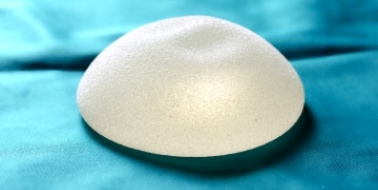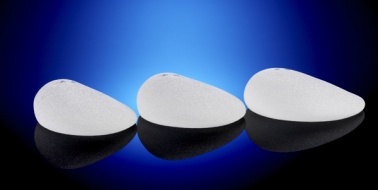At Jefferson Plastic Surgery in Philadelphia, breast augmentation is one of our most frequently performed procedures. The treatment effectively increases the size and improves the shape of the breasts through the placement of silicone gel or saline implants. Read on for detailed information about breast augmentation surgery techniques, recovery, and results.
Breast Augmentation Candidates
The best candidates for breast augmentation surgery are non-smoking women affected by the following aesthetic concerns:
- Small breasts
- Misshapen breasts
- Asymmetrical breasts
- Drooping breasts (in severe cases, breast lift may be performed along with breast augmentation)
- Breast deflation after pregnancy and breastfeeding
- Tubular breasts
Patients getting saline implants should be at least 18 years of age, and patients getting silicone gel implants should be at least 22 years of age.
Breast Augmentation Techniques
Patients that undergo breast augmentation at our practice must decide on an incision technique and placement option prior to surgery.
Incision Options:
Our plastic surgeons offer the inframammary, areolar, and transaxillary breast augmentation techniques.
- Inframammary: The inframammary incision is made in the fold of the breast. The benefit of this approach includes greater control when creating the implant pocket and positioning the implant. The disadvantage is the presence of scarring where the breast meets the chest wall; however, this scarring is discreet, and is usually hidden by the fullness of the breasts, bras, or bikini tops.
- Areolar: The areolar incision is made on the outer, lower edge of the areola. This incision gives our surgeons good control when placing the implants, and the scar blends nicely with the skin surrounding the areola. Some downsides of this technique include the increased risk of permanent nipple numbness after surgery; there are also some limitations on the size of silicone implants that can be placed through this incision type.
- Transaxillary: When the transaxillary technique is performed, the incision is made in the armpit. As a result, there is absolutely no scarring on the breasts; the small scars will instead be located in the armpits. The disadvantage of the transaxillary method is that it makes it more difficult to place and position the implants.
We do not perform the navel, or belly button, method of breast augmentation surgery due to its limitations and increased risk of complications. Silicone gel implants can't be placed through the navel incision, and the manufacturers of saline implants don't offer warranties on their implants when this incision technique is performed.
Placement Options:
Breast implants can be placed above or below the chest muscle.
- Subglandular: In subglandular breast augmentation, the implants are placed above the chest muscle and underneath the mammary gland. This approach results in more cleavage and is associated with less pain during recovery.
- Submuscular: In submuscular breast augmentation, the implant is placed below the chest muscle. This allows for a more natural looking result and reduces the likelihood of visible implant rippling and capsular contracture after surgery.
The Breast Augmentation Procedure
At our Philadelphia practice, the breast augmentation procedure is performed in several steps:
- Pen markings may be made on the breasts (and armpits, in the case of the transaxillary incision) to guide our surgeons during surgery
- The patient is put under general or local anesthesia
- An antibacterial solution is applied to the breasts and incision sites to reduce the risk of infection
- An incision is created in the breast crease, around the areola, or in the armpit
- A pocket is created for the implant; a properly located and sized pocket will reduce the risk of implant displacement and result in a more natural looking outcome
- The breast implant is placed and positioned in the pocket; if saline implants are placed, the saline solution is added
- The process is repeated on the other breast
- After the implant is placed in the other breast, final adjustments are made to both breasts to improve symmetry
- The breast augmentation incisions are closed
- Medical tape and bandages are placed over the incisions to speed healing and reduce the risk of infection
Breast Augmentation Recovery
Since breast augmentation is performed as an outpatient surgery, you may return home after you have wakened from surgery. Be sure to rest for a couple of days after surgery, and follow these instructions.
After breast augmentation surgery, do:
- Wait to shower until we advise you to remove your breast augmentation wraps and bandages
- Wear a sports bra or soft, wireless bra for four weeks
- Begin moving the implant in the pocket or massaging the implant after your first post-operative appointment
After breast augmentation surgery, avoid:
- Taking a bath while the healing tapes are in place
- Normal activities for three to five days
- Vigorous activities for two weeks
- Heavy lifting for four to six weeks
Breast Augmentation Side Effects
It is normal to experience these side effects after breast augmentation surgery:
- Discomfort
- Swelling
- Bruising
- Nausea on the day of surgery due to the anesthesia
- Itchiness around the incision sites
- Numbness around the incision sites
Breast Augmentation Risks
There are also some risks associated with breast implants and augmentation surgery, including:
- Allergic reaction to anesthesia
- Infection
- Implant rippling
- Implant displacement
- Implant leaks or rupture
- Capsular contracture
Breast Augmentation Results
By three months after surgery, most swelling should be gone and the incision completely healed. By one year post-op, any residual swelling will subside and the scar healing process will be complete.
Philadelphia Breast Augmentation Consultations: Contact the surgeons at Jefferson Plastic Surgery in Philadelphia to schedule your breast augmentation consultation.



